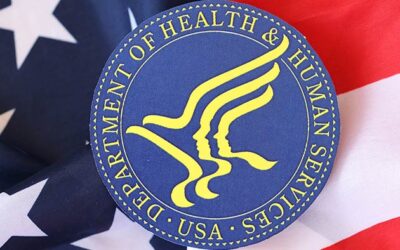by Ray Foxworth, D.C., FICC •
President & Founder, ChiroHealthUSA •
From time to time, we as clinicians find ourselves amid a public health crisis. Today is such a time. COVID-19 has affected not only how you care for patients, but also how you operate a clinical business. As you work the frontlines providing care, serving your patients and your communities, we want to help. It has been a crazy couple of weeks; massive legislative changes, shutdowns across the country, and wondering each morning when we wake up how much longer we will be able to serve our communities.
To help consolidate and bring the profession the most up-to-date information from the CDC and the government, we have created a resource page to help you navigate these rough waters. As small business owners, we are facing many challenges, such as decreased revenue, diminishing supplies to help our patients, and changing market demand as more patients are staying home. There are resources available to help you overcome these challenges and bring you peace of mind.
OSHA has released a white paper on protecting your patients and employees from exposure. The novel Coronavirus is believed to spread from person to person, primarily through respiratory droplets produced when an infected person coughs or sneezes. The virus is also believed to spread by people touching a surface or object and then touching one’s mouth, nose, or possibly the eyes. To review this document, click here. (OSHA, 2020)
Families First Coronavirus Response Act (FFCRA) was signed into law by President Trump on Wednesday, March 18, 2020. According to this new law, after the first ten days of an employee not working, employers must pay their employees no less than two-thirds of the employee’s regular rate of pay, up to $200 per day, and $10,000 in the aggregate. For hourly employees, employers should pay the employee for the number of hours the employee would otherwise have been scheduled to work. If the employee has variable hours, the employer should calculate hours using a number equal to the average number of hours that the employee was scheduled per day over the 6-month period ending on the date on which the employee takes such leave. (DOL, 2020) Many small business owners are concerned about their ability to afford these new changes. FFCRA allows employers to take a credit against the payroll tax that is equal to 100% of the amount paid to employees who take leave. This tax credit also applies to the new paid sick leave requirement. (IRS, 2020)
The U.S. Small Business Association (SBA) will work directly with state Governors to provide targeted, low-interest loans to small businesses and non-profits that have been severely impacted by the Coronavirus. The SBA’s Economic Injury Disaster Loan program provides small businesses with working capital loans of up to $2 million that can provide vital economic support to small businesses to help overcome the temporary loss of revenue they are experiencing. The interest rate on EIDLs will not exceed 4 percent per year. The term of these loans will not exceed 30 years. The repayment term will be determined by your ability to repay the loan. To apply, click here. (SBA, 2020)
I am writing this article on March 24, and you are reading it on or after April 1. The amount of information we receive is changing daily. Rest assured that we are working with the brightest minds in the profession and will continually update information on our resource page to keep you informed. Additionally, we are hosting webinars on these topics to help you navigate loan applications and new responsibilities under changing legislation. All of these webinars are being recorded and are available to view on demand. Know that we are all in this together. We take our motto “The Network that Works for Chiropractic” to heart and will continue working diligently to help you, your staff, and your patients, get through these unprecedented times.









 ▶︎
▶︎  Why is the Discount Challenge prize amount $15,024? Because that is the average “per-occurrence” fine for Medicare inducements. That’s not $15,024 per patient, that’s not per provider, that’s PER VISIT. Stinks, doesn’t it? To us, the prize amount is worth the investment if we can help our profession better understand proper discounting.
Why is the Discount Challenge prize amount $15,024? Because that is the average “per-occurrence” fine for Medicare inducements. That’s not $15,024 per patient, that’s not per provider, that’s PER VISIT. Stinks, doesn’t it? To us, the prize amount is worth the investment if we can help our profession better understand proper discounting.